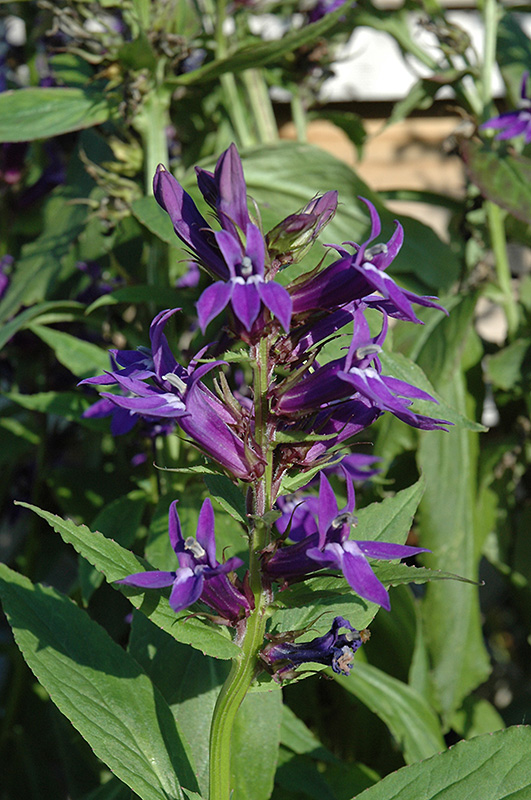Height: 24 inches
Spacing: 15 inches
Sunlight:
![]()
Hardiness Zone: 4
Other Names: Cardinal Flower
Description:
A wonderful sterile dwarf form with true deep purple flowers spikes; excellent in the shade garden or containers; a favorite of hummingbirds, this variety maintains a good form throughout the season and makes an excellent border planting
Ornamental Features
Grape Knee-Hi Lobelia features showy spikes of purple flowers rising above the foliage from early to mid summer. The flowers are excellent for cutting. Its pointy leaves remain green in color throughout the season.
Landscape Attributes
Grape Knee-Hi Lobelia is an herbaceous perennial with an upright spreading habit of growth. Its medium texture blends into the garden, but can always be balanced by a couple of finer or coarser plants for an effective composition.
This is a relatively low maintenance plant, and is best cleaned up in early spring before it resumes active growth for the season. It is a good choice for attracting butterflies and hummingbirds to your yard. It has no significant negative characteristics.
Grape Knee-Hi Lobelia is recommended for the following landscape applications;
- Mass Planting
- General Garden Use
Planting & Growing
Grape Knee-Hi Lobelia will grow to be about 20 inches tall at maturity, with a spread of 18 inches. When grown in masses or used as a bedding plant, individual plants should be spaced approximately 15 inches apart. It grows at a fast rate, and under ideal conditions can be expected to live for approximately 5 years. As an herbaceous perennial, this plant will usually die back to the crown each winter, and will regrow from the base each spring. Be careful not to disturb the crown in late winter when it may not be readily seen!
This plant should be grown in a location with partial shade. Keep it away from hot, dry locations that receive direct afternoon sun or which get reflected sunlight, such as against the south side of a white wall. It is quite adaptable, prefering to grow in average to wet conditions, and will even tolerate some standing water. It may require supplemental watering during periods of drought or extended heat. It is not particular as to soil pH, but grows best in rich soils. It is somewhat tolerant of urban pollution. This particular variety is an interspecific hybrid, and parts of it are known to be toxic to humans and animals, so care should be exercised in planting it around children and pets. It can be propagated by division; however, as a cultivated variety, be aware that it may be subject to certain restrictions or prohibitions on propagation.

